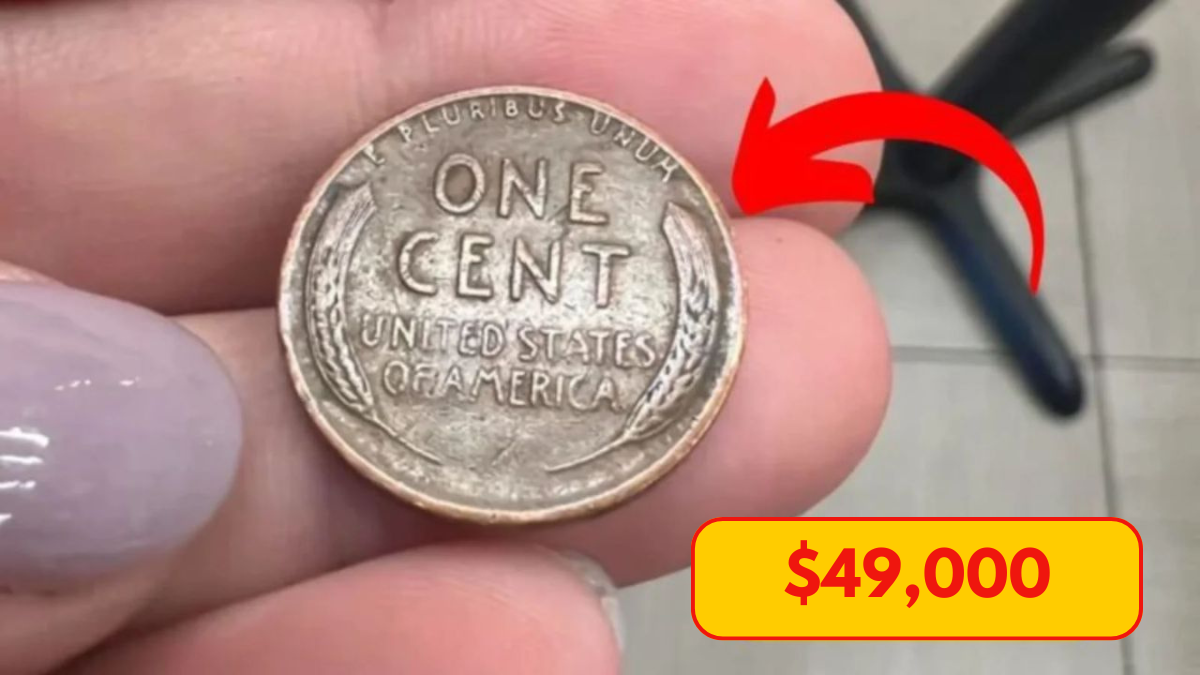
A Revolutionary Coin in American History
The Lincoln Wheat Penny, first introduced in 1909, marked a historic moment in U.S. coinage. For the first time, a real American figure—President Abraham Lincoln—was featured on everyday currency. This was a significant departure from earlier coins, which traditionally showcased allegorical images like Lady Liberty or national symbols such as eagles.
Designed by Victor David Brenner, the obverse of the coin bears a dignified profile of Lincoln, while the reverse displays two wheat ears, symbolizing America’s agricultural heritage. The design was so impactful that it remained in use until 1958, becoming a beloved classic among collectors and historians alike.
The Rarity of the 1914-D Lincoln Penny
Among all Wheat Pennies, the 1914-D version holds legendary status. Minted at the Denver Mint, it carries a small “D” mintmark just below the date on the obverse. In that year, only 1.2 million pieces were produced—a tiny number compared to the tens of millions made by other mints during the same period.
This low mintage instantly made the 1914-D Lincoln cent a scarce treasure, setting the stage for it to become one of the most valuable and coveted coins in American numismatics.
Why the 1914-D Penny Can Be Worth $49,000
You might be wondering how a single penny can command up to $49,000. Several factors contribute to this astounding valuation:
-
Limited Production: With only 1.2 million minted, supply was low from the start.
-
Heavy Circulation: Most of these pennies were used extensively, making well-preserved examples exceptionally rare.
-
Historical Significance: Issued during the early Lincoln cent years and on the eve of World War I, its historical relevance adds substantial value.
A 1914-D penny in mint or near-mint condition is a rare gem, and collectors are willing to pay a premium for such pristine specimens.
Spotting an Authentic 1914-D Wheat Penny
Think you’ve found a 1914-D Wheat Penny? Here’s how to identify it:
-
Front of the Coin: Look for the clear “1914” date. Just beneath it, a small but distinct “D” mintmark confirms it was struck in Denver.
-
Back of the Coin: The design features two wheat stalks along the sides, though these may be worn depending on the coin’s age and use.
Caution: Due to its high value, counterfeit versions are common. If you suspect you own one, always have it authenticated by a professional numismatist or a certified coin grading service.
Condition: The Ultimate Value Decider
The price tag of a 1914-D Lincoln Penny hinges greatly on its condition:
-
A mint-condition example, with original luster and sharp details, can fetch up to $49,000.
-
Even if worn, coins that clearly show the date and mintmark are still highly desirable, often valued in the thousands.
Cleaning or polishing such a coin can significantly reduce its value, so avoid tampering with it.
Protecting Your Rare Find
If you’re fortunate enough to own or discover a 1914-D penny, follow these care tips:
-
Handle by the Edges: Avoid fingerprints or oils.
-
Avoid Cleaning: This can damage the surface and reduce market value.
-
Store Securely: Use acid-free holders or protective coin capsules to safeguard from moisture and physical damage.
Proper storage ensures long-term preservation of both condition and value.
Still in Circulation? A Slim Possibility
Although these coins are over 100 years old, the dream of finding one in circulation hasn’t died. Collectors still uncover them in old coin collections, bank rolls, or rarely, even in loose change.
While chances of stumbling across a 1914-D penny during your daily coffee run are incredibly low, stories of such finds continue to fuel the passion of coin hunters everywhere.
Final Thoughts: A Numismatic Treasure
The 1914-D Lincoln Wheat Penny represents a powerful blend of history, rarity, and collector demand. Its story continues to captivate enthusiasts and historians alike, making it one of the most prized coins in the world of coin collecting.
Disclaimer
This article is for informational purposes only. Coin values are influenced by condition, market trends, and authenticity. Prices mentioned are based on exceptional specimens. Always consult a certified coin expert or appraiser before making purchase or sale decisions.
